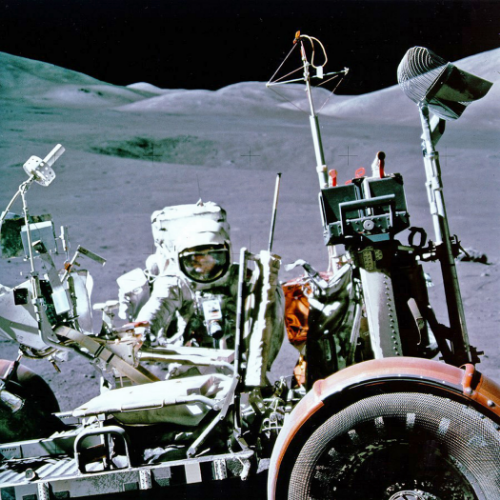Most of us are aware that the first person to set foot on the Moon was Neil Armstrong. But do you know who the last person to step onto the Moon was? Three years after Armstrong, in 1972, Gene Cernan, one of the three astronauts sent to the Moon, became the twelfth and final human to establish contact with the lunar surface. Cernan’s last words spoken on the Moon were, “peace and hope for all mankind.”
Of course, the purpose of the Moon missions, which cost billions of dollars, was not for astronauts to spend their vacations there. The curiosity, exploration, and quest for knowledge inherent in humans are what propelled us into space. The influence of the Cold War between the United States and Russia cannot be denied in the context of space exploration.
Until the last lunar mission in 2013, a total of 20 vehicles were sent to the Moon, with eight of them involving human visits, most of which were successful. Of the 24 astronauts who participated in lunar voyages, 12 set foot on the Moon, while the others took part in various tasks inside and outside the spacecraft.
There are several reasons for the end of lunar expeditions. One of them is the high cost of human visits. For instance, the Apollo Programs cost approximately half a trillion dollars. Other reasons for redirecting interest away from the Moon include the risky nature of human visits, the focus on celestial bodies such as planets and asteroids in space, and the shift from competition among countries to joint collaborative efforts. An indicator of collaborative space exploration is the crew of the International Space Station, which, as of 2019, included 51 Americans, 39 Russians, 6 Japanese, 3 Germans, 3 Italians, 2 French, 2 Canadians, 1 Belgian, 1 Dutch, and 1 British astronaut.[1]
In 2022, 50 years after the last lunar visit, humanity decided to return to the Moon, this time with plans for sustained work. The Artemis Space Program, a rehearsal and unmanned mission, will include the most powerful propulsion system ever used. Many countries and private companies are participating in this approximately $93 billion program. This effort will also send a female astronaut to the Moon for the first time.
Now, if we were to answer the question, “What would have happened if there was no Moon?” Our single satellite, situated about 385,000 km away, completes one orbit around Earth every 29.5 days. As the Moon’s rotation around Earth and Earth’s rotation around the Sun are the same, we always see the same face of the Moon. Additionally, the Moon is gradually moving away from Earth at a rate of about 3.75 cm per year.[2]
According to astronomer Neil F. Comins from the University of Maine, one reason Earth is suitable for sustaining life is the delicate balance between Earth and the Moon. For instance, without the Moon, there would be no gravitational effect on Earth, and tides would not occur. As a result, a day would be approximately eight hours long, and Earth would rotate three times faster.
A planet spinning faster around its axis leads to stronger winds on its surface. Furthermore, changes in temperature between air, land, and sea would be faster, resulting in east-west direction hurricanes with speeds of about 160 kilometers per hour on Earth. Such conditions would make survival, including that of humans, more difficult. Additionally, the liquid core at the center of Earth would rotate faster, resulting in a stronger magnetic field around our planet. This would cause changes in atmospheric structure and threaten the lives of many animals, such as sea turtles, catfish, eels, pigeons, migratory birds, who use the magnetic field for navigation.
Another reason for the Moon’s existence is its role in the 23.5-degree tilt of Earth’s axis.[3] This tilt causes the seasons and ensures that the Equator receives an equal amount of sunlight. This creates suitable climate conditions for life on Earth. Additionally, the Moon acts as a shield against wandering asteroids in space, preventing them from colliding with Earth.
Considering these aspects, it becomes evident that the Moon was created for the benefit of humanity. The Qur’an also draws attention to this privilege of the Moon: “He has made the night for repose, and the Sun and the Moon a means for reckoning (the divisions of time).” (Al-An’am, 6:96).
In conclusion, all efforts to study and reveal the mysteries of the Moon, which is so important for humanity, are precious, even if they are but a small step in the “universe made up of trillions of galaxies and billions of stars in each galaxy.”
[1] “List of visitors to the International Space Station”
[3] Nuri Balta, Ay Olmasaydı: Astronomi O’nu Anlatıyor, İstanbul: Muştu Yayınları, 2014.




